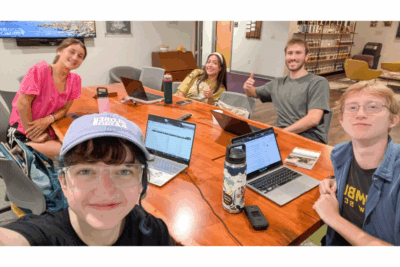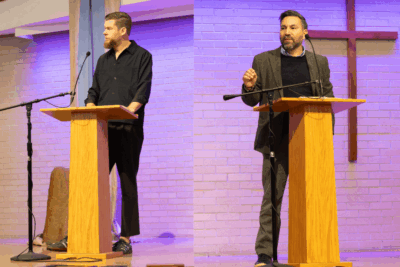Shortly after noon on Friday, March 13, Goshen College’s Crisis Management Team announced the plan for the college to transition from in-person classes to online instruction on Monday, March 23, in response to the COVID-19 pandemic. Goshen is joining campuses across the country, including sister school Eastern Mennonite University, in transitioning to online education for the immediate future.
Many colleges, especially larger universities, have a somewhat robust digital education system already in place; online lectures and webinars are a regular part of the curriculum at Arizona State University and Pennsylvania State University, and even at regional schools like Trine University and Anabaptist Mennonite Biblical Seminary in Elkhart. Goshen, on the other hand, rarely substitutes in-person classes for online alternatives.
At this point, faculty have been directed to start the transition by updating Moodle pages with relevant resources and shifting lesson materials to a digital format. In some classes, students can anticipate short sections of video instruction. For the most part, however, it is more likely that classes will be a combination of forum discussion, reading reflections and quizzes.
Universities around North America are dealing with the same difficult questions as Goshen College. What online services make the most sense to pursue? How can colleges help professors make the transition to online education quickly and effectively? What hiccups can be anticipated and planned for and what problems will be major obstacles?
Seva Gunitsky, a professor of politics at the University of Toronto, reflected in a recent tweet that Twitch, the online streaming service popular with gaming communities, might actually be the best format for large online lessons.
While group-call platforms like Zoom and Skype get bogged down when many users come online, Twitch is designed for thousands of viewers interacting with a single streamer, which fits the lecture format of some classes. Professors at Bridgewater University have been successfully using the platform for educational purposes for years.
William Fisher, a professor of intellectual property law at Harvard University, argued in a recent blog post that live lectures are “the least effective method of online teaching.” Instead, he suggests pre-recording lessons via Zoom, then posting them for students to watch as a way of avoiding the time pressure and technical issues that live lectures entail.
Whichever platform Goshen decides on will need to be integrated quickly. The college also announced on Friday that regular class time on Thursday, March 19 and Friday, March 20 will be replaced with training opportunities to “prepare for this change for faculty and students.” What this training will look like is still unclear. Dr. Ann Venderly, Goshen’s academic dean, has not yet responded to request for details on the matter.
The expedited switch to online instruction and lack of existing digital infrastructure suggest a challenging transition period for Goshen. “The reality is that barely any of us are experts in digital education,” said Philipp Gollner, chair of the history department. “Let’s give each other, and our technical support experts on campus who are doing very hard work these days, some grace.”
The University of Notre Dame's online statements hint at the difficulty of their own transition, reminding instructors that “success here is measured by completion, not by perfection, and that we strive for good outcomes for all students, their instructors, and our staff and community colleagues… Be patient with yourself and with others.”
An entire list of changes being made on campus is available at goshen.edu/emergency/coronavirus

